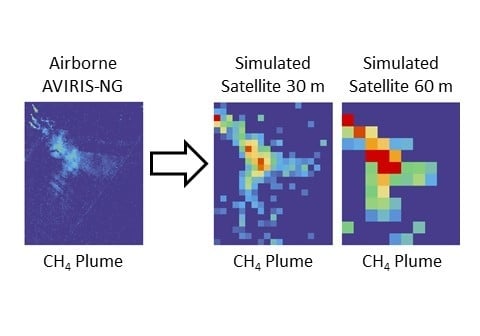Methane Mapping with Future Satellite Imaging Spectrometers
Abstract
Share and Cite
Ayasse, A.K.; Dennison, P.E.; Foote, M.; Thorpe, A.K.; Joshi, S.; Green, R.O.; Duren, R.M.; Thompson, D.R.; Roberts, D.A. Methane Mapping with Future Satellite Imaging Spectrometers. Remote Sens. 2019, 11, 3054. https://doi.org/10.3390/rs11243054
Ayasse AK, Dennison PE, Foote M, Thorpe AK, Joshi S, Green RO, Duren RM, Thompson DR, Roberts DA. Methane Mapping with Future Satellite Imaging Spectrometers. Remote Sensing. 2019; 11(24):3054. https://doi.org/10.3390/rs11243054
Chicago/Turabian StyleAyasse, Alana K., Philip E. Dennison, Markus Foote, Andrew K. Thorpe, Sarang Joshi, Robert O. Green, Riley M. Duren, David R. Thompson, and Dar A. Roberts. 2019. "Methane Mapping with Future Satellite Imaging Spectrometers" Remote Sensing 11, no. 24: 3054. https://doi.org/10.3390/rs11243054
APA StyleAyasse, A. K., Dennison, P. E., Foote, M., Thorpe, A. K., Joshi, S., Green, R. O., Duren, R. M., Thompson, D. R., & Roberts, D. A. (2019). Methane Mapping with Future Satellite Imaging Spectrometers. Remote Sensing, 11(24), 3054. https://doi.org/10.3390/rs11243054







